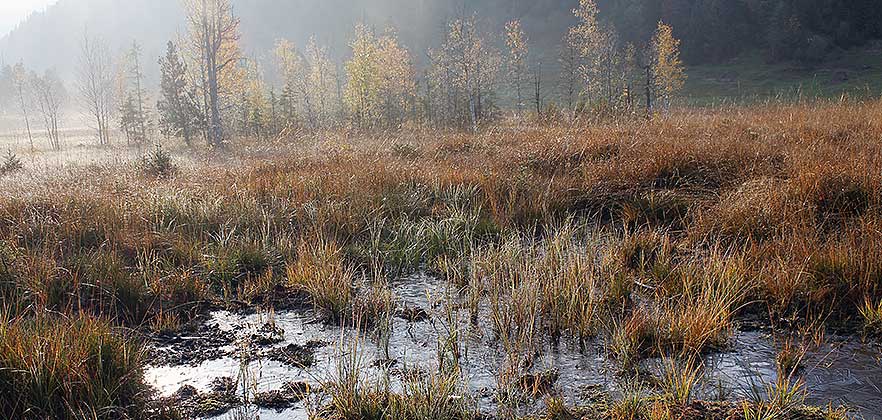Protection of the upland moors has been enshrined in the Swiss Federal Constitution since the Rothenthurm Initiative of 1987. Nevertheless, most of the moors are still in a bad condition. As a result of a lack of money, they are only rarely renaturalised by the Federal Government and the cantons, although the cantons are obliged to restore the moors to their original condition "at every available opportunity". Of the 545 upland moors (total area: 15 km2), only one quarter have been rewetted after 30 years. Around 20,000 tonnes of CO₂ thereby escapes annually from the drained peat of the Swiss upland moors.
To stop the emissions, rewetting of the moor soils is necessary, which could prevent one million tonnes of CO₂ emissions over 50-100 years. In addition, renaturation promotes biodiversity and contributes to the enhancement of the Swiss landscape and to flood protection, since the moors absorb precipitation like sponges. Last but not least, the compensation benefits regional trade, since the majority of the funds used for rewetting flows into the regional economy.
SRF SWITZERLAND news feature «Climate protection through upland moor protection»
The compensation in moor projects is possible thanks to the new standard developed by the Swiss Federal Institute for Forest, Snow and Landscape Research WSL to measure the CO₂ emissions.
Are you interested in compensation to support upland moor renaturation? Then contact the myclimate team.
More Swiss climate protection projects and support programmes by myclimate
